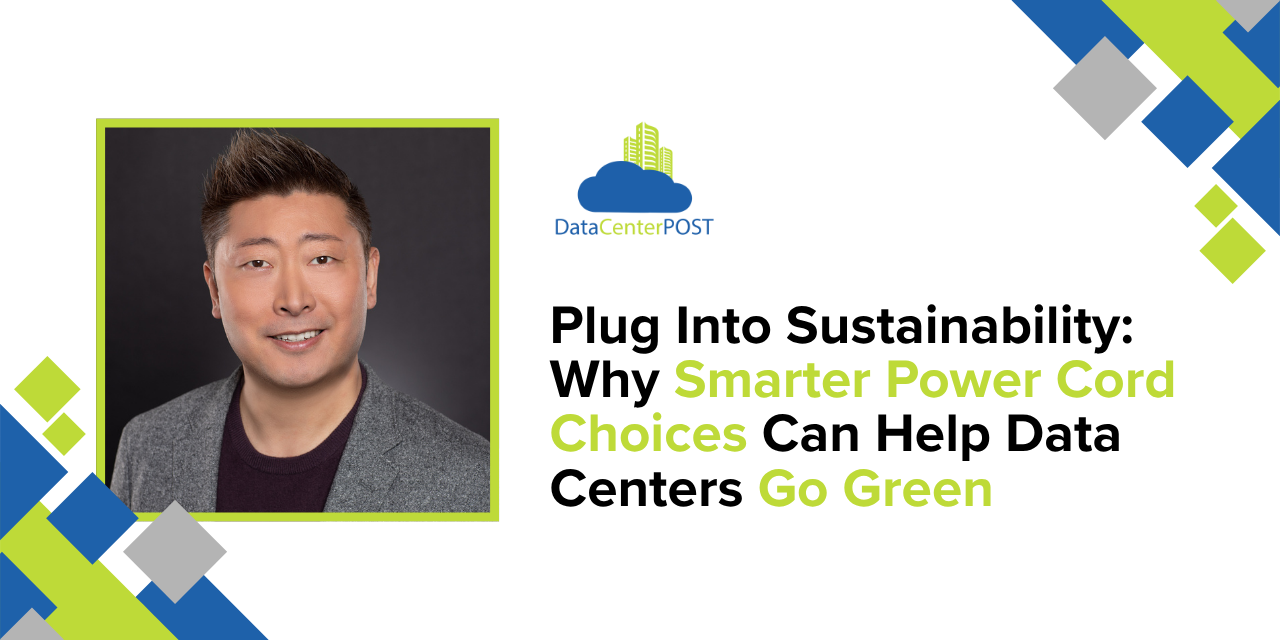As data centers face increasing pressure to meet ESG targets and reduce environmental impact, the focus has primarily been on areas such as renewable energy, advanced cooling technology, and improving power usage effectiveness (PUE). But one category of infrastructure often goes unnoticed: power cords.
While seemingly minor, the choices made around cables and connectors can have a significant impact on sustainability. With global electricity consumption from data centers projected to reach 1,000 TWh by 2026, nearly double 2022 levels, and e-waste already exceeds 50 million metric tons annually, even smaller components deserve greater scrutiny. Power and electronics waste remain a major contributor, yet just 17.4% is formally recycled.
In this context, power cord selection becomes part of a much broader conversation around material efficiency, lifecycle planning, and waste reduction.
Smarter infrastructure planning
Cable design affects both energy efficiency and operational performance. Excess or poorly managed cabling can obstruct airflow, reducing cooling effectiveness and increasing energy consumption. In raised-floor data centers, gaps caused by unmanaged cables can let cooled air bypass equipment entirely, wasting up to 22% of airflow or as much as 78% in extreme cases, according to Upsite Technologies.
This inefficiency forces cooling systems to work harder, driving up energy costs and increasing the risk of thermal hotspots. Cooling accounts for up to 40% of energy usage in a data center, making proper cable management critical for overall efficiency.
Lower-quality materials or inconsistent construction can also shorten replacement cycles, resulting in more frequent disposal and higher e-waste volumes. In contrast, selecting durable, compliant materials can extend product life and reduce the total number of cables needed over time.
Material compliance and environmental standards
Power cords that comply with RoHS and REACH regulations avoid harmful substances, enabling safer recycling and reducing future compliance risks as environmental laws tighten. Manufacturers are increasingly using PVC compounds with up to 50% recycled content and halogen-free jackets, which maintain flexibility, durability, and safety while lowering environmental impact. Modular designs also make cables easier to repair, reuse, or recycle.
Reducing inventory waste
In large-scale, multi-site, global data center operations, it’s common to see dozens of unique power cord SKUs across locations. This complexity creates procurement inefficiencies, raises operational costs, and contributes to unnecessary waste from surplus stock.
One approach to SKU reduction involves implementing IEC power cords with global approvals that meet multiple regional standards. Rather than maintaining separate inventory for each geographic region, such as KC-approved cables for Korea, PSE-approved for Japan, and the various European standards, data centers can significantly streamline their operations with multi-region approved solutions.
By standardizing cable types and specifications around globally certified products, data centers can consolidate inventory, streamline procurement, and significantly reduce manufacturing, storage, and transportation emissions.
Open Compute Project has further accelerated this consolidation. ORv3-compliant connectors work seamlessly across different manufacturers and regions.
Industry-wide, standardization is recognized as a key strategy for slashing procurement and maintenance costs, improving scalability, and ensuring consistent processes across sites. In practice, bulk purchasing of standard components drives down unit price and reduces waste from mismatched or obsolete cables. The result? Fewer SKUs, leaner inventories, lowered carbon footprint, and smoother global deployment.
From operational efficiency to ESG accountability
Beyond cost savings and operational streamlining, these efficiencies also support wider environmental, social, and governance (ESG) objectives by reducing emissions and waste throughout the supply chain.
Supporting ESG goals at the component level
Scope 3 emissions can represent up to 70% of a company’s carbon footprint in infrastructure-heavy sectors, pushing procurement teams to assess the sustainability of components like power cords—not just headline systems. Key questions include whether materials are compliant, cables can be standardized globally, end-of-life processes are clear, and suppliers provide Scope 3 emissions data.
Procurement teams should be asking:
- Are the materials RoHS and REACH compliant?
- Can these cables be standardized across global operations?
- What happens to these products at end-of-life?
- Can the supplier provide data to support Scope 3 reporting?
Leaders like HP demonstrate this approach, about 68% of their emissions come from upstream supply chains, mostly Scope 3, and they require 95% of suppliers to commit to science-based targets and disclose emissions across Scopes 1, 2, and 3. This trend shows even minor components are scrutinised for their sustainability footprint, from material choices to lifecycle impacts. For data center operators, choosing partners who align with ESG goals across the entire supply chain is becoming a key driver of long-term success.
A small change with wider impact
By rethinking how cables are sourced, designed, and deployed, data centers can make measurable progress toward sustainability targets without compromising on reliability or uptime. While power cords may not draw the same attention as high-efficiency chillers or renewable power, their role is becoming increasingly relevant in the effort to build greener, more efficient infrastructure.
About the Author:
Jae Ro, marketing manager at SIGNAL + POWER, supplier of IEC plug connectors, explains how smarter power cord choices through better material selection, RoHS and REACH compliance, SKU reduction, and lifecycle planning, can help data centers become more sustainable without compromising performance or uptime.


